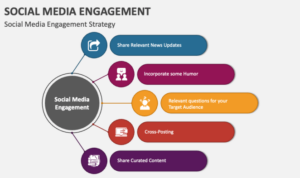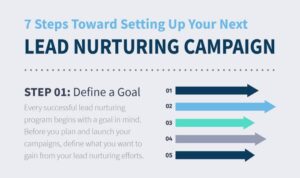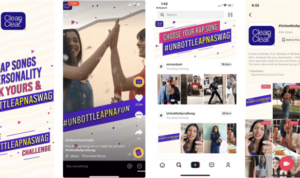Building a Niche Audience kicks off with a bang, diving into the world of marketing to explore the power of targeting a specific audience. Get ready to uncover the secrets behind successful brands and their niche strategies!
Defining a Niche Audience
A niche audience refers to a specific, well-defined segment of the market that shares unique characteristics or interests. This group typically has a distinct set of preferences, needs, and behaviors that differentiate them from the broader population.
Importance of Niche Audience in Marketing
Targeting a niche audience is crucial in marketing as it allows companies to tailor their products, messaging, and marketing strategies to meet the specific needs and preferences of that particular group. By focusing on a niche audience, businesses can create more personalized and relevant experiences, leading to increased customer loyalty and satisfaction.
- By concentrating on a niche audience, companies can establish themselves as experts in a particular field, building credibility and trust among consumers.
- Marketing to a niche audience can also result in higher conversion rates and more effective lead generation, as the message resonates more strongly with a targeted group.
Examples of Successful Brands Targeting Niche Audiences
Several brands have effectively targeted niche audiences to achieve success in the market:
- Peloton: The fitness company targets a niche audience of at-home fitness enthusiasts with its high-end exercise bike and subscription-based workout classes.
- Patagonia: The outdoor clothing brand focuses on environmentally-conscious consumers who value sustainability and ethical practices.
- Warby Parker: The eyewear company caters to a niche audience of fashion-forward individuals looking for affordable, stylish glasses.
Benefits of Focusing on a Niche Audience
Compared to targeting a broader audience, focusing on a niche audience offers several benefits:
- Increased Brand Loyalty: Niche audiences tend to be more loyal to brands that cater specifically to their needs and preferences.
- Higher ROI: Marketing efforts directed at a niche audience are often more cost-effective and yield a higher return on investment due to the targeted nature of the campaigns.
- Less Competition: By targeting a niche audience, businesses face less competition and can establish a stronger market position in a specialized segment.
Identifying Your Niche Audience

To successfully reach and engage with your niche audience, it is crucial to first identify who they are and what they need. Conducting market research is key to understanding the specific demographics, psychographics, and behaviors of your niche audience.
Conducting Market Research, Building a Niche Audience
Market research involves gathering data and information about your target audience to better understand their preferences, needs, and habits. This can be done through surveys, focus groups, interviews, and analyzing existing data.
- Utilize online tools like Google Analytics to track website traffic and user behavior.
- Engage with your audience on social media platforms to gather feedback and insights.
- Study competitors who cater to similar niche audiences to identify trends and preferences.
Understanding Needs and Preferences
To effectively serve your niche audience, it is essential to understand their needs and preferences. This involves creating buyer personas based on research findings and feedback to tailor your products or services accordingly.
- Personalize your marketing messages to resonate with the specific interests of your niche audience.
- Offer unique value propositions that address the pain points and desires of your target market.
- Provide exceptional customer service and support to build trust and loyalty among your niche audience.
Importance of Demographics, Psychographics, and Behavior
Demographics, psychographics, and behavior play a crucial role in defining a niche audience. Demographics provide basic information such as age, gender, income, and location, while psychographics delve deeper into values, interests, and lifestyles. Understanding behavior helps predict consumer actions and preferences.
- Demographics help segment your audience and target specific groups with tailored marketing strategies.
- Psychographics offer insights into the motivations and preferences of your niche audience for more personalized messaging.
- Behavioral data allows you to anticipate buying patterns and adjust your approach to meet the evolving needs of your niche audience.
Engaging a Niche Audience

To effectively engage a niche audience, it is crucial to create tailored content that resonates with their specific interests and needs. By understanding what makes your niche audience unique, you can develop marketing campaigns that speak directly to them, increasing the likelihood of connecting and building a loyal following.
Creating Tailored Content
Creating tailored content involves conducting thorough research to understand the preferences, behaviors, and demographics of your niche audience. This information can help you craft messages and visuals that are relatable and engaging to them. By personalizing your content, you can establish a deeper connection with your niche audience and differentiate yourself from competitors.
- Utilize language and tone that resonates with your niche audience’s culture and preferences.
- Highlight specific pain points or desires that are relevant to your niche audience.
- Include visuals and imagery that appeal to your niche audience’s aesthetic tastes.
- Create content that provides valuable and unique insights that cater to the interests of your niche audience.
Examples of Personalized Marketing Campaigns
One example of a personalized marketing campaign that effectively engaged a niche audience is Nike’s collaboration with basketball player LeBron James. By creating limited-edition sneakers and apparel endorsed by LeBron James, Nike was able to target basketball enthusiasts and fans of the player, resulting in high demand and engagement within this niche audience.Another example is Glossier’s marketing strategy, which focuses on natural beauty and skincare products.
By using real customer testimonials and featuring diverse models in their campaigns, Glossier successfully connected with a niche audience of young, beauty-conscious consumers who value authenticity and inclusivity.
Role of Social Media
Social media plays a crucial role in reaching and engaging with a niche audience due to its ability to target specific demographics and interests. Platforms like Instagram, Facebook, and TikTok allow businesses to create personalized content, interact directly with their niche audience, and gather valuable feedback for future campaigns. By leveraging social media analytics and insights, businesses can refine their strategies to better resonate with their niche audience and drive engagement.
- Use targeted ads to reach specific segments of your niche audience based on their interests and behaviors.
- Engage with your niche audience through interactive content like polls, quizzes, and live streams.
- Create user-generated content campaigns that encourage your niche audience to share their experiences with your brand.
- Collaborate with influencers or micro-influencers who have a strong connection with your niche audience.
Building Trust and Loyalty: Building A Niche Audience
Building trust with a niche audience is crucial for creating a loyal following. Authentic communication plays a key role in establishing this trust, as it allows your audience to connect with you on a deeper level. By being genuine, transparent, and consistent in your messaging, you can build credibility and reliability with your niche audience.
Strategies for Fostering Long-Term Loyalty
- Engage with your audience regularly through social media, email newsletters, or blog posts to maintain a strong presence.
- Provide valuable content that addresses the specific needs and interests of your niche audience, demonstrating your expertise and understanding.
- Offer personalized experiences, such as exclusive discounts, behind-the-scenes content, or special events, to make your audience feel appreciated and valued.
- Solicit feedback and listen to your audience’s suggestions to show that their opinions matter and that you are committed to meeting their expectations.
- Collaborate with influencers or partners who resonate with your niche audience to expand your reach and credibility.
Delivering Consistent Value
To maintain trust and loyalty with your niche audience, it is essential to consistently deliver value through your content and interactions. This means staying true to your brand identity, maintaining high-quality standards, and continually seeking ways to innovate and improve. By consistently providing valuable insights, entertainment, or solutions to your audience, you can solidify your position as a trusted source and build long-lasting relationships with your niche community.





